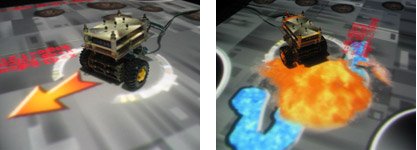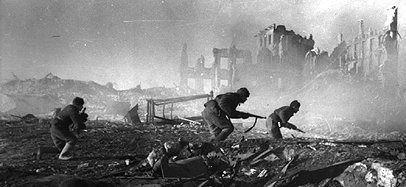Understanding UNIX/Linux file system (I)
Friday, January 20, 2006, 08:45 PM - Apt-get Install
A conceptual understanding of file system, especially data structure and related terms will help you become a successful system administrator. I have seen many new Linux system administrator w/o any clue about file system. The conceptual knowledge can be applied to restore file system in an emergency situation.
There we go then
via Adminspotting
Do and don't battery table
Friday, January 20, 2006, 08:43 PM - Games
I can never remember if it's my battery or my woolen socks what I have to put on the freezer all night so it doesn't get beads. Luckily enough, it's been a year and a half and my beautiful Asus M3000np keeps working 4.5 hours without drinking the wall. Julian's one, though, only gives around 2.30. Same batteries, same life and we still don't know how it happened. If only we have had the Battery Table ...
Thanks again, Bryan !
Also, from My life, Cut Short and for all windows users, How to re-calibrate your Laptop Battery. As far as I know, the rest will have to work the BIOS. Sugestions are welcomed.
a Second Life for web apps
Friday, January 20, 2006, 08:40 PM - Games
Ning is a free online service (or, as we like to call it, a Playground) for building social apps - web apps that enable anyone to match, transact, and communicate with other people. With Ning, you can build and use social apps for just about anything.
Developing your social apps on the Ning Playground has some advantages:
* App creation tools - including the ability to view the source code of and clone any running app on the Ning Playground
* App management, hosting, and security
* Example Apps you can clone and run in minutes
* User registration, user profile and role management
* Tagging as a built-in service for every app
* Navigation and search
You can develop an app from scratch by viewing the source code of other running apps to get ideas. Or, simply clone any running app and then modify it however you'd like. To see app source code or to clone, click any View Source or Clone this App link on the Ning Sidebar, found on the right hand 225 pixels of any app page.
When you clone an app, your new app's source code is a copy of the source code of the app you cloned. Your new app works the same as the original, only now you own it and can modify it in any way that you want - run it "as is" or apply it to a new location, interest, topic, or language.
link
TYWAXY
The Python Grimoire
Friday, January 20, 2006, 08:37 PM - Robots
grimoire /grimwaar/ (noun) ::= a book of magic spells and invocations. Origin: French, alteration of grammaire 'grammar'. A grammar is a description of a set of symbols and how to combine them to create well-formed sentences. A grimoire is a description of a set of magical symbols and how to combine them properly. It is sort of a recipe-book for magic spells. See also Grimoire
The core of the Grimoire was originally developed and released by Andrew M. Kuchling in May, 1999. However, it never reached a stage where Andrew felt that it was ready for publication, and eventually he withdrew it. Steve Ferg, however, had found the Grimoire very helpful as he was learning Python, and he persuaded Andrew to allow him to take over maintenance of the document in August, 2002.
link
The [AR] Coliseum
Sunday, September 11, 2005, 01:55 PM - Apt-get Install, Games
From the Department of Mechanical Engineering and Intelligent Systems at the University of Electro-Communications in Tokyo:

In this study, a game environment using augmented reality (AR) technology that enables virtual functions for playing a game using small robots is proposed. Similar to how children can use their imaginations to make a normal room into the air for playing games with toy airplane, we propose a way to embody such imaginations virtually by superimposing computer graphics onto toys in the real world.
Playing with toys such as small robots and vehicles is improved and enhanced by projecting images to the areas corresponding to the actual positions and directions of the toys. In addition, objects are able to express the phenomena of this augmented reality world by controlling actuators according to the results of simulations.
In the environment that we propose, the games are played with small robots and vehicles that can be treated as actual toys of the real world.
How cool is that.
link
video
The rest of Tom's Hardware Report on Siggraph
Developing Firefox Extensions with GNU/Linux
Sunday, September 11, 2005, 01:09 PM - Apt-get Install
In '89, an ancient Sumerian deity named Zuul razed downtown New York with her avatar, a flaming, Stay-puft Mallowzilla. In related news, the aptly named "Mozilla Foundation" has released Firefox 1.5 Beta, a web browser built on an easily extended, cross-platform application framework called XUL (pronounced "Zuul"). In this article, I will provide insight into how to professionally develop a Firefox Extension with GNU/Linux. For demonstration, I'll develop an application called Stantz.
This article is directed to anybody who wants to extend Firefox. Experience writing HTML, Javascript, and CSS should be all you need to understand XUL. Some knowledge about the Linux command line and the Python programming language are desirable, but not necessary. You may want to play with an Apache web server's configuration, and experience handling a neutron accelerator pack would certainly help. Thankfully, you won't need to build Mozilla and you won't have to compile any C or C++.
link
cheers luv!
Can war photography survive in a world of instant media?
Saturday, September 10, 2005, 11:27 PM - Copyfight

During his exile from Germany during the Second World War, Bertolt Brecht collected photographs. In Sweden, Finland and finally the USA, he cut out and collated a large number of the images of the war that he found in newspapers and magazines. Before long, he had begun to append to these grim relics a series of four-line poems: ironic epigrams aimed not only at the horror of the war itself, but also at its unprecedented restaging as a photographic spectacle. The resulting book, War Primer (1955), is a graphic record of its author’s insight into the new visual lexicon of global warfare. There are aerial photographs of smoking cities; shots of leaders toying with the latest military hardware (Churchill poses with a tommy-gun; Brecht’s caption declares: ‘gang law is something I can understand’); ludicrous propaganda stunts (Hermann Goering cradles his pet lion cub); and a good many more mutilated corpses than most news editors would nowadays countenance. The book is Brecht’s wartime vindication of his late friend Walter Benjamin’s assertion that truth might be best broached by fragmented, alienated, mechanized form. What would a contemporary War Primer look like?
Shot, by Brian Dillon.
Modern Painters [#sept]
Back Next












